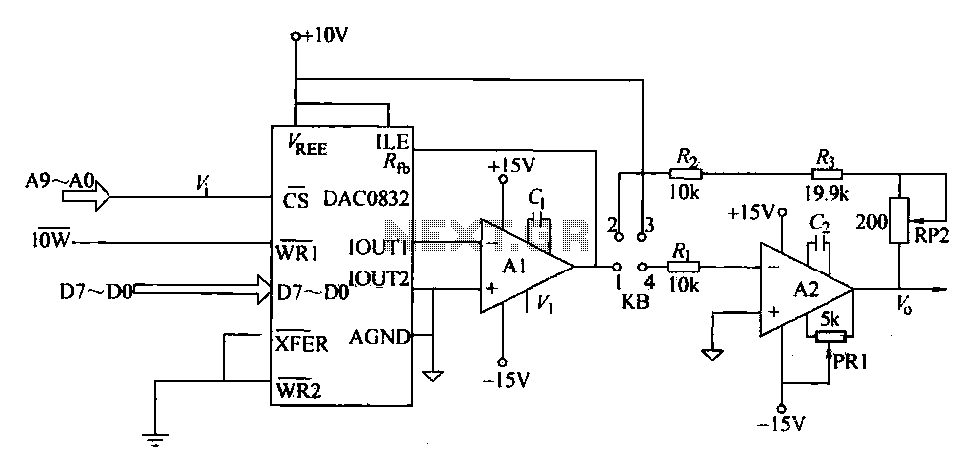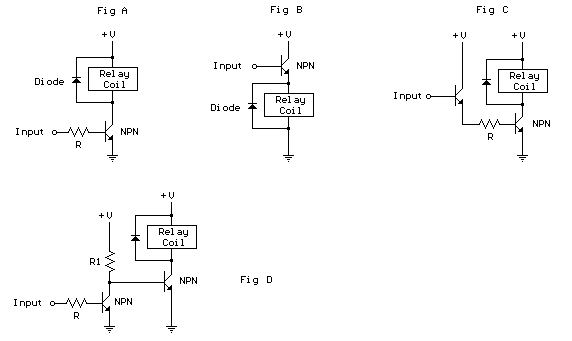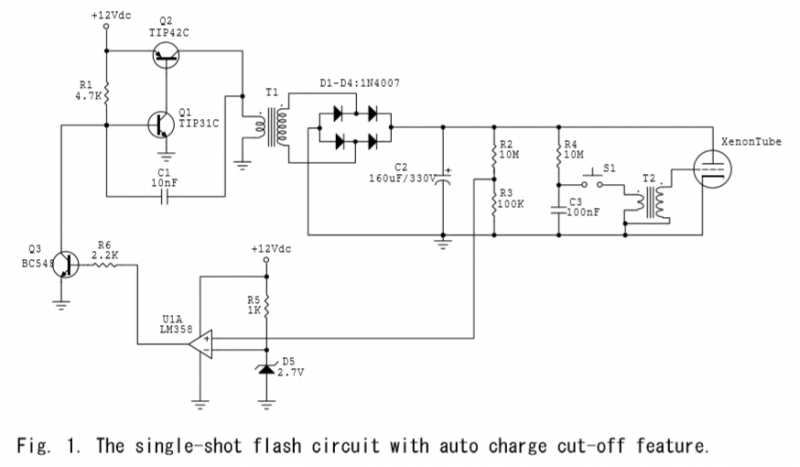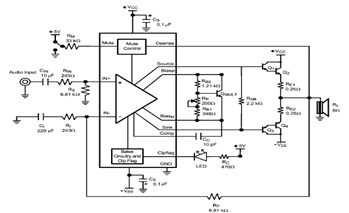
300w power amplifier circuit with 2n773
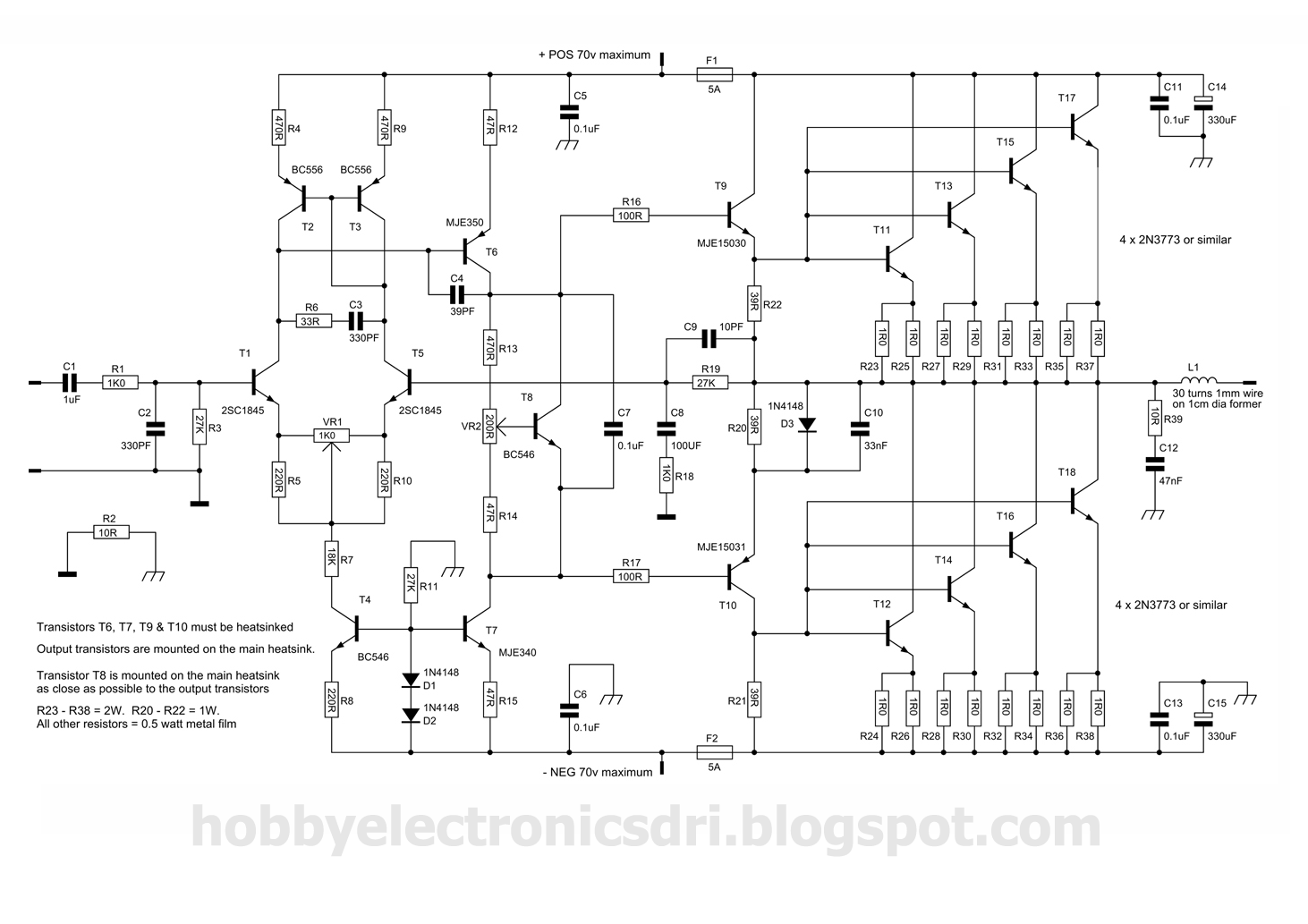
This amplifier was designed to utilize the otherwise unused TO3 power transistors that many hobbyists possess. With proper construction, the module can achieve high-quality performance and is rated for 300 watts into a 4-ohm load, depending on the power supply. With the specified driver and output transistors, it is limited to a DC rail of +/- 70 volts.
This amplifier circuit is specifically engineered to maximize the performance of TO3 power transistors, which are often overlooked in hobbyist applications. The design emphasizes efficient use of these components, allowing for significant power output while maintaining audio fidelity. The amplifier is capable of delivering up to 300 watts into a 4-ohm load, making it suitable for high-demand audio applications.
The circuit operates with a dual power supply configuration, providing DC rails of +/- 70 volts. This voltage level is critical for achieving the desired output power and efficiency. The choice of driver and output transistors is essential; they must be selected to handle the specified voltage and current levels while ensuring thermal stability and reliability.
Proper construction techniques should be employed to minimize noise and distortion. This includes using high-quality capacitors in the power supply section to filter out ripple and provide stable voltage to the amplifier. Additionally, careful layout design will help reduce parasitic inductance and capacitance, which can adversely affect performance.
Thermal management is another crucial aspect of this amplifier design. Adequate heat sinking must be provided for the TO3 transistors to prevent overheating during operation, especially at high output levels. A well-ventilated enclosure is recommended to facilitate airflow and dissipate heat effectively.
In summary, this amplifier design not only repurposes TO3 power transistors but also provides an opportunity for hobbyists to build a high-performance audio amplifier capable of delivering substantial power while maintaining high fidelity. The careful selection of components and attention to construction details will ensure optimal performance and longevity of the amplifier.This amplifier was designed to provide a use for the otherwise useless TO3 power transistors that many hobbyists have in their junk pile. With good construction the module is capable of high quality performance and is rated to 300 watts into a 4 ohm load depending on power supply.
With the driver and output transistors specified it is limited to D C rails of +/- 70 volts. 🔗 External reference
This amplifier circuit is specifically engineered to maximize the performance of TO3 power transistors, which are often overlooked in hobbyist applications. The design emphasizes efficient use of these components, allowing for significant power output while maintaining audio fidelity. The amplifier is capable of delivering up to 300 watts into a 4-ohm load, making it suitable for high-demand audio applications.
The circuit operates with a dual power supply configuration, providing DC rails of +/- 70 volts. This voltage level is critical for achieving the desired output power and efficiency. The choice of driver and output transistors is essential; they must be selected to handle the specified voltage and current levels while ensuring thermal stability and reliability.
Proper construction techniques should be employed to minimize noise and distortion. This includes using high-quality capacitors in the power supply section to filter out ripple and provide stable voltage to the amplifier. Additionally, careful layout design will help reduce parasitic inductance and capacitance, which can adversely affect performance.
Thermal management is another crucial aspect of this amplifier design. Adequate heat sinking must be provided for the TO3 transistors to prevent overheating during operation, especially at high output levels. A well-ventilated enclosure is recommended to facilitate airflow and dissipate heat effectively.
In summary, this amplifier design not only repurposes TO3 power transistors but also provides an opportunity for hobbyists to build a high-performance audio amplifier capable of delivering substantial power while maintaining high fidelity. The careful selection of components and attention to construction details will ensure optimal performance and longevity of the amplifier.This amplifier was designed to provide a use for the otherwise useless TO3 power transistors that many hobbyists have in their junk pile. With good construction the module is capable of high quality performance and is rated to 300 watts into a 4 ohm load depending on power supply.
With the driver and output transistors specified it is limited to D C rails of +/- 70 volts. 🔗 External reference
